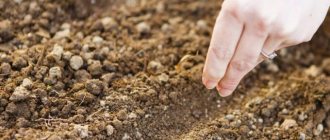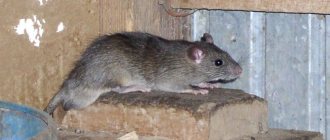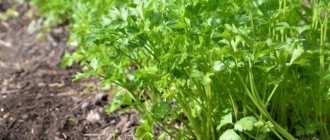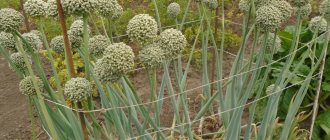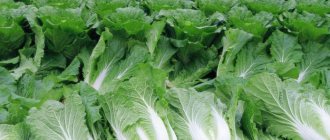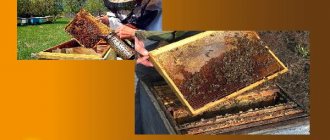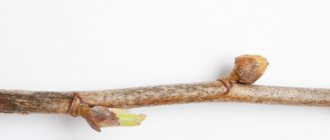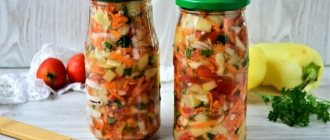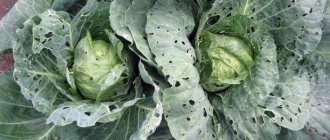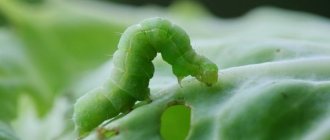Due to the wide variety of cabbage varieties, its harvesting period extends from the first half of summer until mid-autumn. To get a good harvest, it is important not only to collect it on time, but also to take into account all the instructions for growing root crops for 2-4 months. Otherwise, cabbage belongs to the group of vegetables that are most resistant to various conditions and is able to survive in not the most favorable conditions, retaining its beneficial substances. Read on to learn how to harvest and store cabbage and how to ensure that the fruits serve you as long as they were promised.
Harvesting and storing cabbage
When is it necessary and possible to collect heads of cabbage in the garden, at what temperature?
It’s easy to determine that a head of cabbage has matured and it’s time to cut it:
- when the forks are compressed, it produces a characteristic crunch,
- the leaves have acquired a bluish tint,
- the top of the head of cabbage became smooth and shiny.
When planning harvest, in addition to external signs of ripeness, you need to pay attention to weather conditions.
Ideal weather for cutting cabbage heads:
- no precipitation,
- partly cloudy,
- air temperature from +4 to +8°С.
It is very important to harvest cabbage before the first frost occurs. Already at temperatures below -6° we can talk about product spoilage.
Depending on the ripening period
The time to harvest cabbage largely depends on the ripening time of each specific variety.
- Early varieties (for example, June) are harvested on the ninetieth day after planting the seedlings (starting from the end of June). Early varieties cannot be kept in the garden for long, as the heads of cabbage become overripe and begin to crack and rot.
- Mid-season varieties (for example, Slava or Kupchikha) are stored for up to five months. Harvesting begins in September (one hundred and forty days after planting the seeds).
- Late, or winter, varieties (for example, Crumont or Amager) are the best option for long-term storage. The collection of these low-juice, dense heads of cabbage begins one hundred and fifty days after planting the seedlings (in mid-October). If the necessary conditions are met, late varieties of cabbage can be stored for up to nine months.
As practice has shown, those varieties that are harvested in August - October are best stored. Long-term storage is facilitated by the rather dense structure of the head of cabbage, the minimal amount of liquid in the leaves and the late harvest date.
We take into account climate and region
One of the determining factors in the cabbage harvest date is the climate of the region in which it was grown:
In the Moscow region, cabbage harvesting begins in the second half of September.
The end of the harvest is the last weeks of October. The harvested crop must be immediately placed in refrigerated storage. Otherwise, there is a high risk that the heads of cabbage will begin to rot.- In the harsh conditions of Siberia, the cabbage harvest begins in the first week of September (it is during this period that the air temperature reaches zero).
If during the harvesting process the air temperature drops to -4°C, it’s okay. You can continue working, provided that the head of cabbage has thawed at the root. - In the Urals, cabbage harvesting begins in early September. To determine a more accurate date, experienced gardeners advise counting four months from the day the seedlings were planted in open ground.
Region and climate
When to harvest cabbage in Siberia according to the lunar calendar is a question that worries many housewives in the northern region of Russia. This area is characterized by a continental climate, as well as frequent temperature fluctuations, so frost-resistant, late varieties of cabbage are most often grown. Summers are usually hot, winters are very cold, and there is little precipitation. In Siberia, cabbage is harvested from the second half of October to mid-November.
In the northern regions of Russia you can find plantings of white cabbage, as it can withstand temperature changes remarkably well, even severe first frosts. Other varieties are also cultivated, but not yet in such volumes.
How to remove from the garden correctly?
It is possible to preserve the integrity of the cabbage head, and at the same time ensure the longest storage period for the crop, provided that certain harvesting rules are observed:
- Heads of cabbage are cut only in dry weather. Wet leaves begin to rot very quickly, so if it rains during the harvesting process, before storing the cabbage, it must be thoroughly dried outside under a canopy.
- Ten days before the start of harvesting, watering the cabbage beds is stopped.
- The heads of cabbage are cut down with a hatchet or cut with a very sharp knife. A sharp fork will be required to dig up the roots. During the cutting process, it is important to ensure that the stalk length remains at least 5 cm.
- If the soil in the garden is loose, the heads of cabbage are twisted out along with the roots.
- When cutting cabbage, be sure to leave three outer leaves. They will protect the head from damage, rot, fungi and mold.
- Insufficiently formed, rotten and other “defective” heads of cabbage are immediately sorted and set aside. They are not suitable for long-term storage.
If cabbage was grown in soil saturated with nitrogen-containing fertilizers, the crop also cannot be stored for long periods of time. It is immediately recycled.
Necessary equipment
What gardening tools should I use?
To collect white cabbage, you can use a large sharp knife , but it is most convenient to take a small hatchet .
It is sharpened well the day before, and then it will help you quickly cope with the task.
But in any case, you will need a knife to carefully cut off the green leaves sticking out on the sides. You won’t need anything else from gardening tools, but if you want to uproot stalks sticking out of the ground , then work gloves and a shovel may also come in handy.
Features for different types of vegetables
The beginning of the harvest largely depends on the variety of cabbage grown.
Savoy
This variety is distinguished by very delicate corrugated leaves . The early variety is ready for harvesting on the sixtieth day after sowing the seed.
Late varieties can be harvested three months after planting (they tolerate the first frosts well).
The main sign of maturity is an elastic, dense head of cabbage (weight 2-3 kg) . Cut the heads of cabbage in dry weather, trying to leave the stalk as long as possible. When storing for storage, two or three covering leaves are left on the head of cabbage.
Colored
It’s very easy to choose the moment to harvest cauliflower; just look to see if the head is ripe. The following signs indicate ripeness:
- head hard, white;
- no flowering (small green leaves);
- the stalk reaches up to 8 cm in diameter.
Dig up the heads of cabbage along with the stalks. When storing cauliflower, remove the top leaves and roots.
There is no point in being late in harvesting cauliflower. Otherwise, the flesh of the head becomes coarser, becomes fibrous, and black spots of spoilage begin to appear on the white surface.
Red cabbage
The harvest is harvested in the last week of September - early October . For long-term storage, only elastic heads of cabbage with a bright purple color are selected.
After the heads of cabbage are cut, they are left to dry for some time in the fresh air, after which they are lowered into the basement for long-term storage.
Broccoli
The harvest begins 70-100 days after germination of the seed ( depending on the region, the harvest time falls in the last days of August - early September ).
Heads of cabbage are cut in dry, cool weather, in the morning or evening hours (the sun negatively affects the nutritional properties of broccoli).
It is very important to ensure that the broccoli heads do not freeze . One night with sub-zero temperatures and cabbage left in the garden will lose its taste and nutritional properties.
Beijing
Depending on the variety, harvesting can begin on the sixtieth day of seed germination (mid-ripening varieties) or on the eightieth day (late-ripening variety). As a rule, by mid-October the Chinese cabbage crop is fully harvested.
To preserve the density, juiciness and taste of Chinese cabbage, the heads of cabbage are pulled out by the roots. For storage, the heads of cabbage are not cleared of the top leaves or trimmed.
How to prepare the harvest?
Preparing cabbage for storage comes down to three stages:
- We choose the best heads of cabbage . For long-term storage, only strong, dense heads are left. It is important to ensure that the leaves have not been eaten by butterflies or slugs, and that there are no cracks on the stalk. Unripe cabbage heads and heads of cabbage with mechanical damage received during harvesting cannot be stored.
- Trim off the excess . Before sending the head of cabbage for storage, the top leaves are torn off (no more than three protective leaves are left) and the stem is cut off.
- Wash and dry . The heads of cabbage are washed off the ground with a stream of cool water, after which the cabbage is dried in the fresh air.
Where is the best place to put it?
There are a sufficient number of places where you can store cut heads of cabbage:
- A basement or cellar is an ideal place with optimal storage conditions for the harvested crop. Before storing, the heads of cabbage are dried and wrapped in several layers of newsprint. It is convenient to store cabbage in the basement in a suspended state. To do this, the heads of cabbage are tied in pairs and hung on a crossbar.
A pantry is a good place for storage, provided that it maintains the required air temperature level (from 0 to + 3 ° C).
Before storing food, you need to make sure that there is no mold on the walls of the pantry. The heads of cabbage are wrapped in parchment and laid out in a pyramid (stalks up) in the darkest corner.- A balcony for storing cabbage is only suitable if it is insulated and in winter the air temperature in the room does not drop below -4°C. The heads of cabbage are laid out in lattice wooden or plastic boxes with the stalks inward.
- In a refrigerator . A small cabbage harvest can be stored in a regular refrigerator. Each head of cabbage is wrapped in cling film and placed in the vegetable compartment. Periodically, cabbage is checked for the presence of areas of rot and mold.
If there is no cellar or free space on the balcony, the harvest can be stored in a garden pit. A layer of straw is laid on the bottom, on which the heads of cabbage are placed in one row. The top of the cabbage is covered with straw and a thick tarpaulin.
Adviсe
It is important to adhere to the following recommendations:
- You cannot leave cut heads of cabbage in the garden at sub-zero temperatures. The cabbage will freeze, after thawing it will lose its taste and spoil very quickly.
- If during the harvest period the air temperature drops below 0°C, the still uncut heads should be left in the garden. You can cut them off when the air warms up and the plugs thaw.
- Do not delay the cabbage harvest. At a temperature of -6°C, the heads of cabbage freeze, which leads to rapid spoilage of the product.
- To prevent the cut heads from losing their juiciness during storage, several protective leaves are left on them.
- When storing cabbage in a basement or cellar, you need to make sure that there are no boxes of vegetables or fruits with a strong smell nearby.
- Stocks should be checked periodically for the presence of rotten heads of cabbage. Otherwise, one rotten vegetable can cause damage to almost the entire crop.
This article will tell you at what temperature fresh cabbage should be stored in winter. Read all the most important things about storing cabbage here.
Signs of cabbage ripeness
While dates of exact ripening are not always a reliable criterion, the characteristic external features of a ripening vegetable can provide more reliable information. It is easier to focus on these signs to find out about the condition of the fetus:
- The ripeness of a vegetable should be determined by relying on tactile impressions. The cabbage head should be firm. If the vegetable is pliable and easily wrinkles in your hands, it means that it has not yet had time to form;
Before harvesting, you need to feel the cabbage to determine its degree of maturity.
Yellowing of leaves is not always a clear sign of ripening and requires confirmation by other criteria
